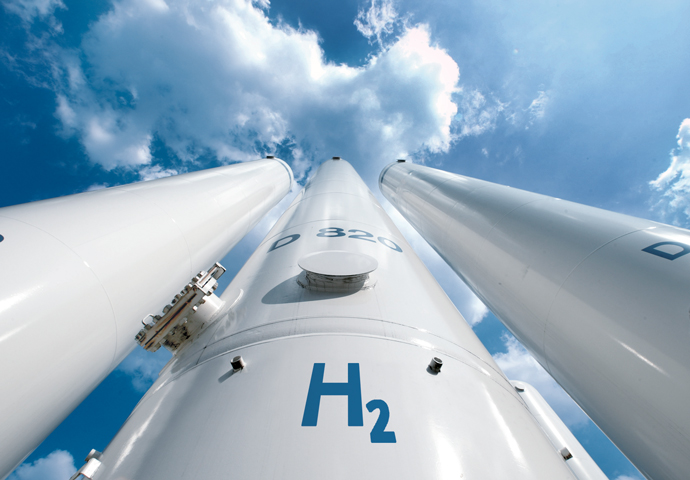
Distribution and storage matching your requirements!
Our distribution & storage facilities range from specially insulated tanks for liquid hydrogen to pressurised cylinders, tanks and pipes for compressed gaseous hydrogen.

Distribution and storage are two essential steps in the supply chain of hydrogen. Drawing on our long-standing experience, we work closely with local partners to find the production, distribution and storage methods best suited to local logistical and economic needs.
We have the technologies and application know-how to serve any requirement, regardless of distance between hydrogen production, storage and dispensing sites; number of hydrogen deliveries needed; and daily consumption of hydrogen.
We also specialize in both compressed gaseous hydrogen (CGH2) and cryogenic liquid hydrogen (LH2), which has a temperature of -253°C. Our storage and transport facilities range from specially insulated tanks for LH2 to pressurized cylinders, tanks and pipes for CGH2.

Distribution Options
Road Transport
For road transport, we have dedicated CGH2 trailers for compressed hydrogen and LH2 trailers for cryogenic hydrogen.
Pipelines
We transport large volumes of hydrogen over long distances via several pipeline networks. Linde has over 1000km of H2 pipelines.
On-Site Production
We also construct and integrate on-site facilities to produce hydrogen (through reforming or electrolysis), thus eliminating the need of hydrogen transport/pipe.

Storage Options
There are two dominant methods for the efficient storage of hydrogen: in tanks under high pressure at ambient temperature, and in insulated vessels at low pressure and extremely low temperature (20 K). Cryogenic liquefied hydrogen (LH₂) has the advantages of a much greater energy content per unit volume and a smaller volume requirement for storage.
Compressed Storage
Hydrogen can be compressed into high preassure tanks without liquefying it. This is an option if gaseous supply is more economical.
Linde has vast experience in compression and storage of gaseous hydrogen.
Liquid Storage
Hydrogen can also be stored as a liquid at very low temperatures (-253°C). Liquiefied hydrogen requires cryogenic tanks, and is an efficient solution long-term. Liquid hydrogen provides more energy onboard in the same space and offers faster bunkering time when compared to compressed hydrogen.
Linde Kryotechnik has decades of experience in the construction of hydrogen liquefaction systems. We have designed liquefiers with capacities ranging from 150 to more than 20,000 litres per hour in one train.

Bunkering Hydrogen can be provided to the vessel via bunkering, on-shore via tank or directly to ship or swap bodies. On-board storage Linde has developed a range of sophisticated, sustainable hydrogen infrastructure technologies to ensure the fast, efficient and successful execution of fueling projects.